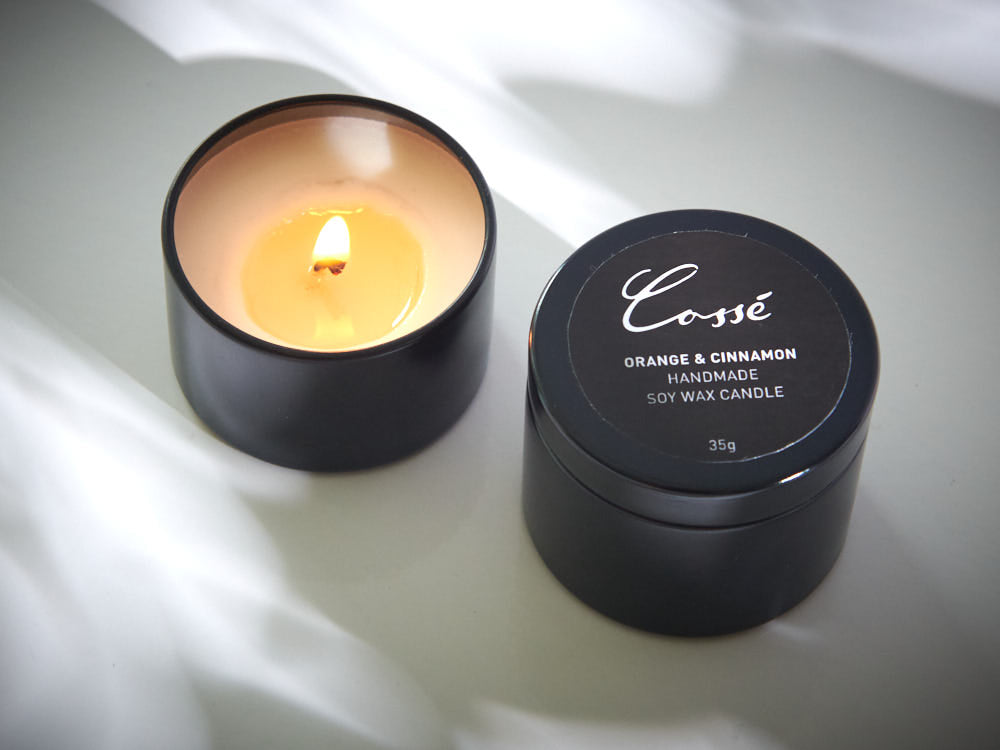Experience the Calmness of Crystal Soy Candles and Home Fragrance
Wiki Article
From Wick to Wax: Comprehending the Chemistry Behind Soy Wax Candles and Their Ecological Impact
As we brighten our spaces with the cozy glow of candle lights, there lies a realm of detailed chemistry behind the seemingly easy act of lighting a soy wax candle light. Join us as we untangle the clinical intricacies behind soy wax candle lights and explore their ramifications on our atmosphere.Soy Wax Vs. Paraffin Wax
When comparing soy wax and paraffin wax for candle light making, it is necessary to recognize the unique features and benefits of each material. Soy wax is a natural, renewable energy stemmed from soybean oil, making it green and naturally degradable - home fragrance. On the other hand, paraffin wax is a byproduct of oil refining, which increases worries regarding its ecological impact and sustainabilitySoy wax candle lights melt cleaner and send out much less soot contrasted to paraffin wax candles, making them a healthier selection for indoor air quality. In addition, soy wax has a lower melting point, enabling a longer-lasting candle light that disperses fragrance extra properly. Paraffin wax, on the other hand, has a tendency to melt faster and much less easily, potentially releasing damaging chemicals into the air.
From a sustainability perspective, soy wax is favored for its biodegradability and eco-friendly sourcing, lining up with the expanding consumer preference for eco mindful products. While paraffin wax has been a conventional selection in candle light making because of its price and simplicity of usage, the change towards environment-friendly alternatives like soy wax is getting momentum in the industry.
Chemical Structure of Soy Wax

Combustion Process in Soy Candles
The chemical structure of soy wax directly affects the combustion process in soy candle lights, influencing factors such as shed time, aroma release, and ecological impact. When a soy candle is lit, the warm from the fire melts the wax near the wick. This liquid wax is after that prepared the wick as a result of capillary activity. As the liquid wax reaches the flame, it undertakes and vaporizes burning. The combustion procedure includes the vaporized hydrocarbons in the wax reacting with oxygen airborne to create warm, light, click site water vapor, and carbon dioxide.
The combustion performance of soy candle lights is influenced by the pureness of the soy wax and the top quality of the wick. A clean-burning soy candle with an effectively sized wick will certainly decrease and create a stable fire soot formation. This not only expands the melt time of the candle yet also enhances the release of scents. Furthermore, soy wax candles have a lower ecological influence contrasted to paraffin candles due to their naturally degradable and renewable nature.

Ecological Advantages of Soy Wax

Taken into consideration a lasting option to standard paraffin wax, soy wax uses noteworthy ecological advantages that make it a popular selection amongst eco-conscious consumers. Soy wax burns cleaner and generates much less soot than paraffin wax, adding to better indoor air quality and lowering the demand for cleansing and upkeep. Overall, the environmental advantages of soy wax align with the growing demand for eco-friendly and sustainable products in the market.
Recycling and Disposal Factors To Consider
Recycling and proper disposal of soy wax candle lights play a critical duty in preserving ecological sustainability and Resources reducing waste in homes and communities. When it comes to reusing soy wax candles, the very first step is to ensure that the candle has actually burned totally.
In regards to disposal, if recycling is not an alternative, soy wax candle lights are eco-friendly and can be securely dealt with in most family waste systems. Nevertheless, it is constantly advised to examine with local reusing facilities or waste monitoring services for particular guidelines on candle disposal to make sure correct handling and environmental protection.
Conclusion
Finally, the chemistry behind soy wax candle lights exposes their ecological benefits over paraffin wax candles. Soy wax, obtained from soybean oil, burns cleaner and produces less residue when compared to paraffin wax. The combustion process in soy candle lights is more effective, bring about a longer and extra also melt. Additionally, soy wax is biodegradable and sustainable, making it an extra lasting choice for candle light manufacturing. Recycling and correct disposal of soy wax candles better add to their environmental effect.When contrasting soy wax and paraffin wax for candle light making, it is essential to recognize the distinct qualities and benefits of each material (soy candles).Soy wax candles melt cleaner and discharge useful content less residue compared to paraffin wax candles, making them a much healthier option for interior air quality.Considered a lasting option to conventional paraffin wax, soy wax supplies significant environmental benefits that make it a prominent selection amongst eco-conscious customers. Soy wax burns cleaner and produces less residue than paraffin wax, adding to much better interior air high quality and decreasing the need for cleaning and upkeep.In final thought, the chemistry behind soy wax candles discloses their environmental benefits over paraffin wax candle lights
Report this wiki page